Cyprus is a great place to witness early spring migration across the Mediterranean. On almost the 30th anniversary of my last visit, I decided it was about time I returned. So, we spent a very enjoyable week on Cyprus, based in the south-west, north of Paphos. Needless to say, there were lots of good birds to see, both regional specialities and migrants heading north.
One of the highlights of the whole trip was on our first full morning on Cyprus. We decided to have an early look round the archaeological site on Paphos Headland, which is a magnet for migrants. One of the first birds we came across was a male Cinereous Bunting, a very scarce visitor to Cyprus, on its way between back to breed in W Turkey or Lesbos, from its wintering grounds around the Red Sea. Quite a way to start!
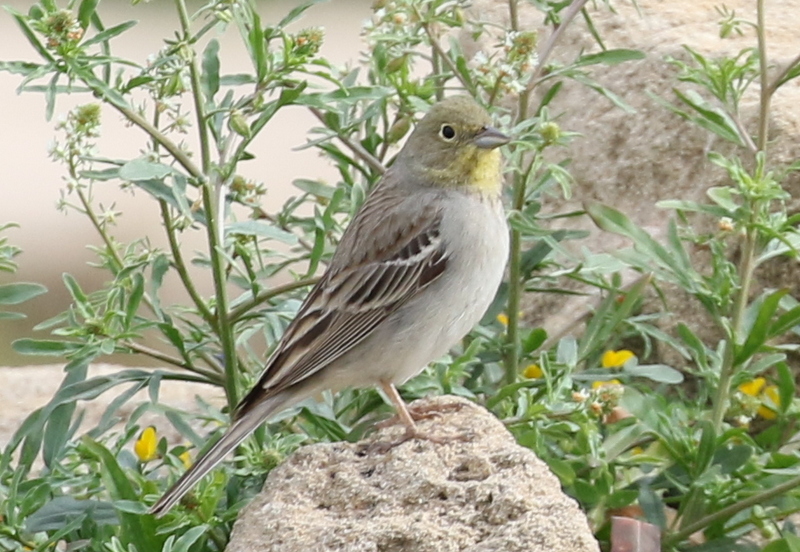 Cinereous Bunting – a very scarce visitor to Cyprus
Cinereous Bunting – a very scarce visitor to Cyprus
There are three endemic species found on Cyprus, which are ‘must sees’ on any visit. Thankfully, two of them are not hard to see. We saw Cyprus Wheatear every day. A small number were on the coast, possibly fresh arrivals, but slightly inland birds were singing and holding territory. Formerly considered a race of Pied Wheatear, Cyprus Wheatear has for some time been treated as a full species in its own right.
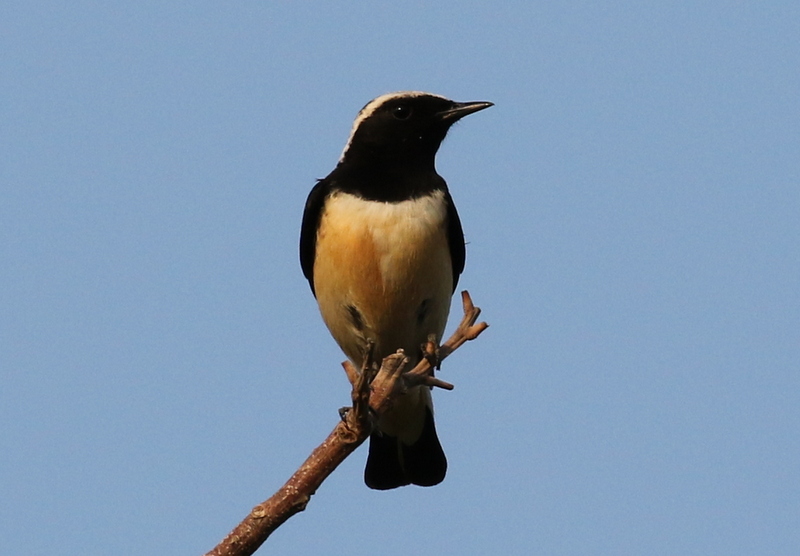 Cyprus Wheatear – a singing male, near to where we were staying
Cyprus Wheatear – a singing male, near to where we were staying
Cyprus Warbler was a little harder to find, but still we came across birds at three different sites. Like many Mediterraean Sylvia warblers, they are rather skulking birds, but the song of the male at this time of year alerted us to their presence. With a bit of perseverance, we were able to enjoy great views of them.
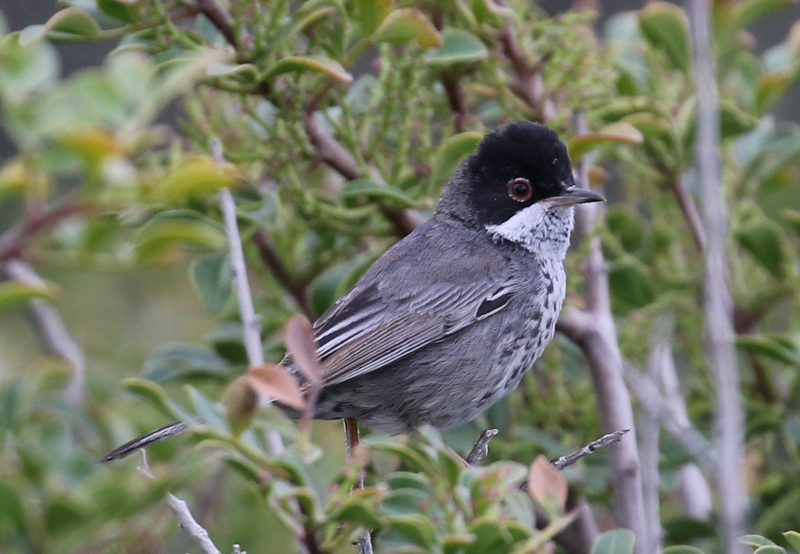 Cyprus Warbler – we came across singing males at three different sites
Cyprus Warbler – we came across singing males at three different sites
The third endemic species is another which has been elevated from a mere subspecies, in this instance rather more recently, just last year (and still not recognised as such by all authorities). Cyprus Scops Owl was previously treated as a race of European Scops Owl, but has a noticeably different ‘song’ and also tends to be rather darker. We had heard one singing at night on a couple of occasions, but were then told about a site where there was a day roosting bird which might be visible. Thankfully, after we heard it singing briefly in the middle of the day, we managed to find it roosting in a tree. A stunning bird! We also heard another day singing Cyprus Scops Owl the same day at another site.
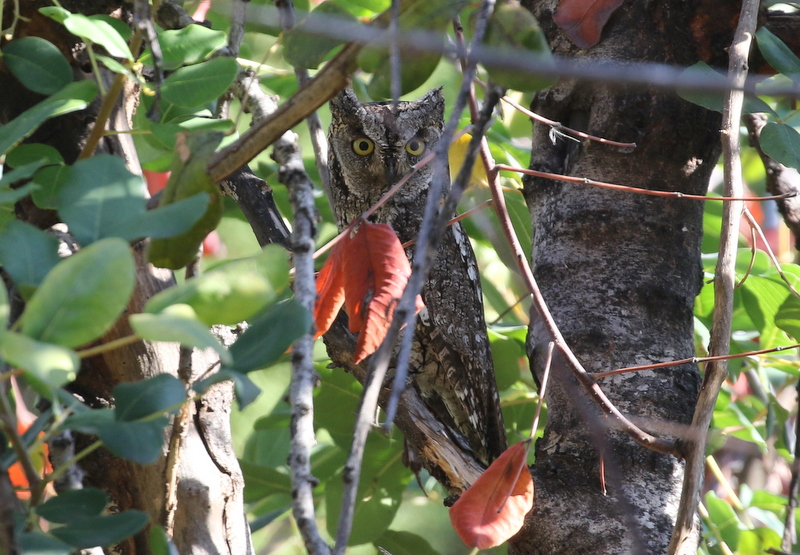 Cyprus Scops Owl – now generally treated as a full endemic species
Cyprus Scops Owl – now generally treated as a full endemic species
Aside from these three, there are also several endemic or near-endemic subspecies on Cyprus, several of which are found up a higher elevation in the Troodos Mountains. We spent a very successful morning in the Troodos, where were able to locate the four main target birds – Dorothy’s Treecreeper, Cyprus Coal Tit, Cyprus Jay and guillemardi Crossbill (the latter is also found in Turkey & the Caucasus). The first two are particularly distinctive.
Dorothy’s Treecreeper is quite a striking bird, much greyer above than Short-toed Treecreeper (of which it is currently considered a subspecies) and with a very different vocal repertoire. Both of these suggest that it could be a candidate for revised treatment as a full species in the future.
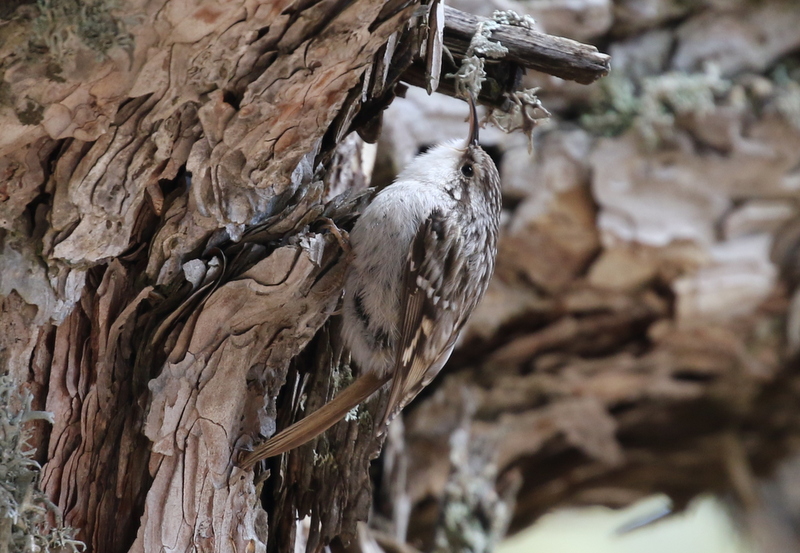 Dorothy’s (Short-toed) Treecreeper – much greyer & with very different vocalisations
Dorothy’s (Short-toed) Treecreeper – much greyer & with very different vocalisations
Cyprus Coal Tit also looks very different from other subspecies of Coal Tit, with a very extensive black bib and reduced white cheeks and white nape stripe.
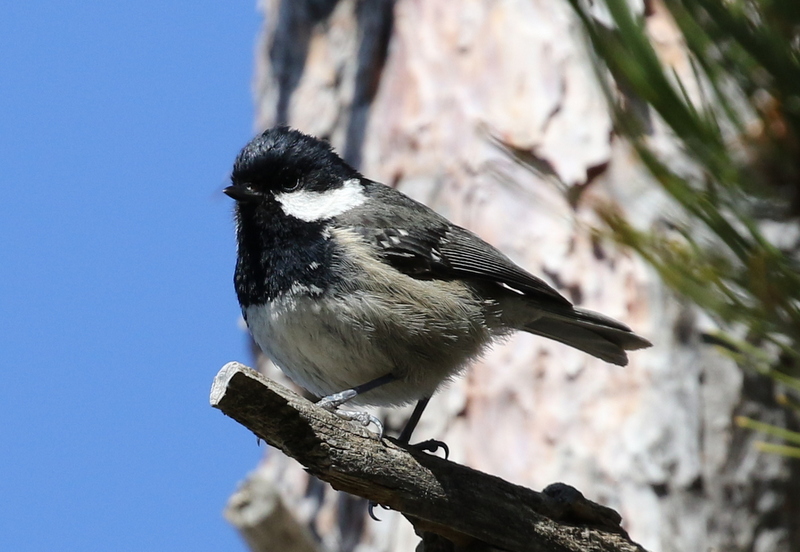 Cyprus Coal Tit – differing in appearance to other Coal Tits
Cyprus Coal Tit – differing in appearance to other Coal Tits
Cyprus is also a great place to see several eastern Mediterranean species, like Cretzschmar’s Bunting and Ruppell’s Warbler. Ruppell’s Warbler is just a migrant, passing through at this time of year – we saw them quite regularly during our stay. As well as Ruppell’s Warbler, there were smaller numbers of Eastern Bonelli’s Warbler and Eastern Subalpine Warbler plus a single Eastern Orphean Warbler on our first full morning at Paphos. As elsewhere in the Mediterranean, Sardinian Warblers are common and large numbers of Lesser Whitethroat and Chiffchaffs were seen daily, stopping off on their journey north.
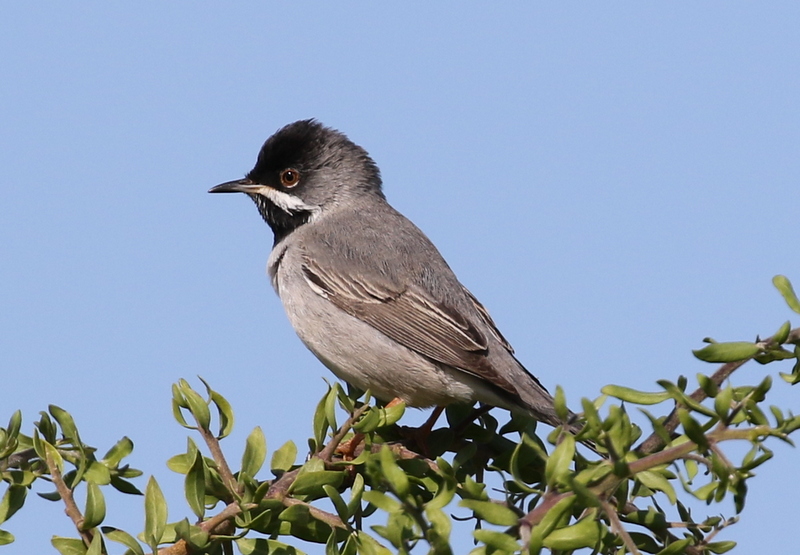 Ruppell’s Warbler – a male
Ruppell’s Warbler – a male
Cretzschmar’s Bunting breeds on Cyprus, but is much commoner at this time of year, as birds are also passing through on migration. We ran into them regularly during our stay, both at sites around the coast such as Paphos, and also inland. We also found a small number of Ortolan Buntings, often associating with the commoner Cretzschmar’s Buntings.
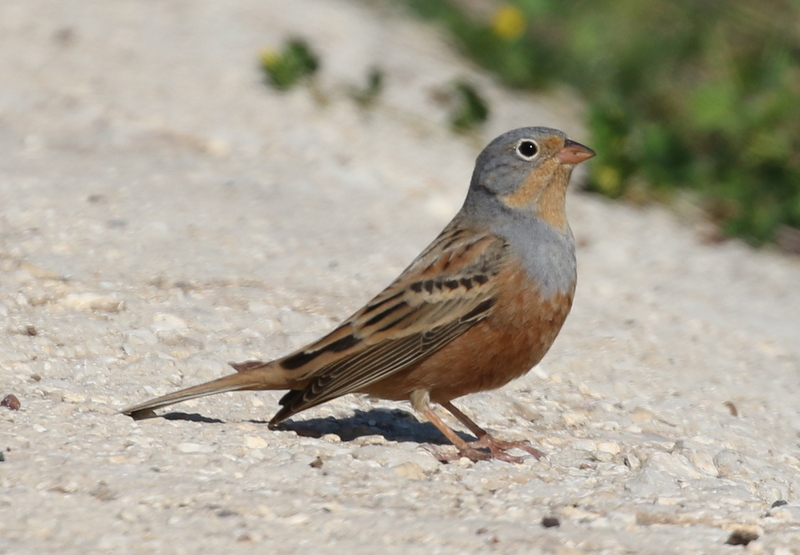 Cretzschmar’s Bunting – a summer visitor and passage migrant through Cyprus
Cretzschmar’s Bunting – a summer visitor and passage migrant through Cyprus
As well as the Cypriot specialities, the main reason for visiting Cyprus at this time of year is to see all the migrants which are passing through the island. Wagtails and Pipits were particularly in evidence. It was great to watch large flocks of yellow wagtails, with one numbering a conservative 150 birds, feeding in the fields. The largest proportion of the flocks were Black-headed Wagtails, their buzzy calls very different from the Yellow Wagtails we get here. It was a particularly great experience to watch them feeding at close quarters in a carpet of spring flowers at Paphos headland. Stunning!
 Black-headed Wagtail – feeding in the spring flowers at Paphos headland
Black-headed Wagtail – feeding in the spring flowers at Paphos headland
Black-headed Wagtail intergrades with several other subspecies of yellow wagtail and some of these forms are distinctive enough to have specific names. However, the range of variation is considerable. ‘superciliaris’ typically has a black head with a clear white supercilium, but some birds have much reduced white on the head.
 Black-headed Wagtail ‘superciliaris’ intergrade – with a white supercilium
Black-headed Wagtail ‘superciliaris’ intergrade – with a white supercilium
The ‘dombrowskii’ intergrade form has a greyer head, blacker ear coverts and a bright supercilium, but again we found several birds which had a reduced supercilium, or had differing proportions of grey and black around the head. It was fascinating to see the range of variation.
 Black-headed Wagtail ‘dombrowskii’ intergrade type – grey nape, but reduced supercilium
Black-headed Wagtail ‘dombrowskii’ intergrade type – grey nape, but reduced supercilium
The Pipits were slightly less confusing, but no less exciting that the Wagtails. Another of the highlights was watching groups of Red-throated Pipits feeding just a few metres away in the spring flowers at Paphos. On one morning, we had at least 30 Red-throated Pipits here. Many were in full summer plumage now, with throats in various shades of red. We encountered smaller groups of Tree Pipits and Meadow Pipits too. Tawny Pipits were passing through as well, and a flock of about 20 Tawny Pipits in the hills was particularly noteworthy.
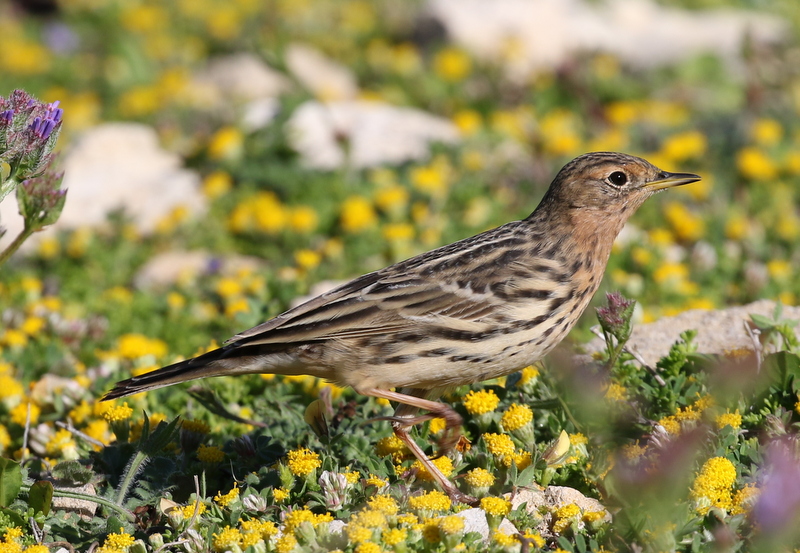 Red-throated Pipit – feeding in the spring flowers at Paphos
Red-throated Pipit – feeding in the spring flowers at Paphos
As well as the endemic Cyprus Wheatears, several other wheatear species were passing through the island while we were there. There were good numbers of Northern Wheatears, which we encountered regularly around the coast. However, it was particularly nice to have the chance to watch plenty of Isabelline Wheatears, a rather rare visitor to the UK.
 Isabelline Wheatear – we saw good numbers of this species, mostly around the coast
Isabelline Wheatear – we saw good numbers of this species, mostly around the coast
On one morning, we encountered a particularly good arrival of wheatears on Paphos headland and in with the Northern and Isabelline Wheatears, we found a cracking male Desert Wheatear too. Desert Wheatear is a regular migrant through Cyprus, but in small numbers, so this was certainly a good bird to see.
 Desert Wheatear – a smart male
Desert Wheatear – a smart male
We also encountered good numbers of Eastern Black-eared Wheatears on our travels, with males of both the pale-throated and dark-throated forms and a few females.
 Eastern Black-eared Wheatear – of the pale-throated form
Eastern Black-eared Wheatear – of the pale-throated form
From around the middle of our week on Cyprus, there was a noticeable arrival of flycatchers. They came in particularly with some rain overnight Friday into Saturday. After that, we found Collared Flycatchers to be fairly common, mostly ones or twos but we ran into them at many different sites, and often just in bushes along the roadside. Smigies picnic site was one of the most productive sites – we had at least four different male Collared Flycatchers here one morning.
 Collared Flycatcher – a noticeable arrival and then seen daily
Collared Flycatcher – a noticeable arrival and then seen daily
As well as the Collared Flycatchers we found a couple of Semi-collared Flycatchers and Pied Flycatchers. It provided a great opportunity to compare the three different species. Most of the flycatchers passing through at this time were smart males, which always makes the process of identification easier.
 Semi-collared Flycatcher – we found a couple of males of this species
Semi-collared Flycatcher – we found a couple of males of this species
As well as all the wheatears and flycatchers, there were smaller numbers of Common Redstart, Stonechat and Whinchat on their way north. While Nightingales breed on Cyprus, there were many around the coast especially that appeared to be migrants. We also came across three different Wrynecks at widely spaced locations.
There were smaller numbers of migrant larks passing through Cyprus at this time of year. However, we did encounter several small flocks of Short-toed Larks around the coast, which are always nice to see.
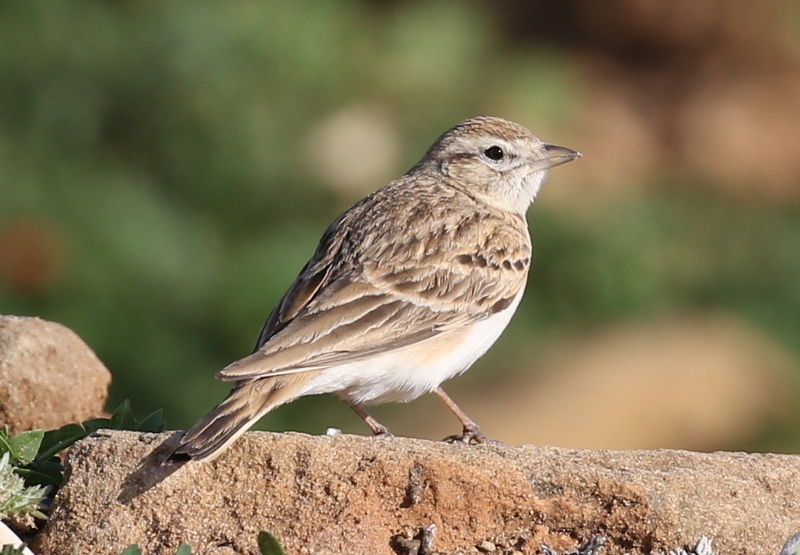 Short-toed Lark – we encountered several small flocks around the coast
Short-toed Lark – we encountered several small flocks around the coast
The resident Crested Larks were very obliging, with their punk haircuts. Very photogenic!
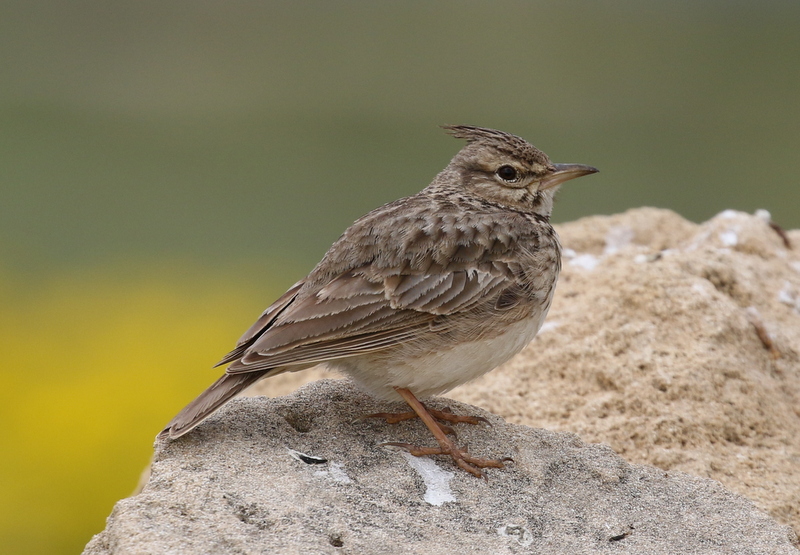 Crested Lark – very obliging
Crested Lark – very obliging
Some other noticeable migrants we saw regularly were herons. Small flocks of Grey Herons and Night Herons were seen coming in around the coast or making their way inland.
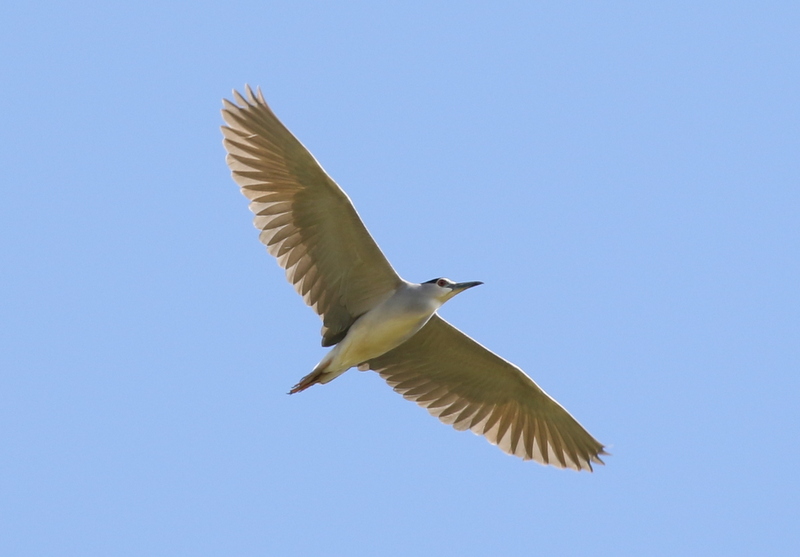 Night Heron – several small groups seen on the move around the coast
Night Heron – several small groups seen on the move around the coast
On one morning, we flushed a Purple Heron from the archaeological site at Paphos, which flew round and landed in the trees nearby, and then watched a second Purple Heron come in off the sea. As well as the more obvious migrants, we saw several herons and egrets around some of the wetland sites, including also a few Squacco Herons, Cattle Egrets and Little Egrets.
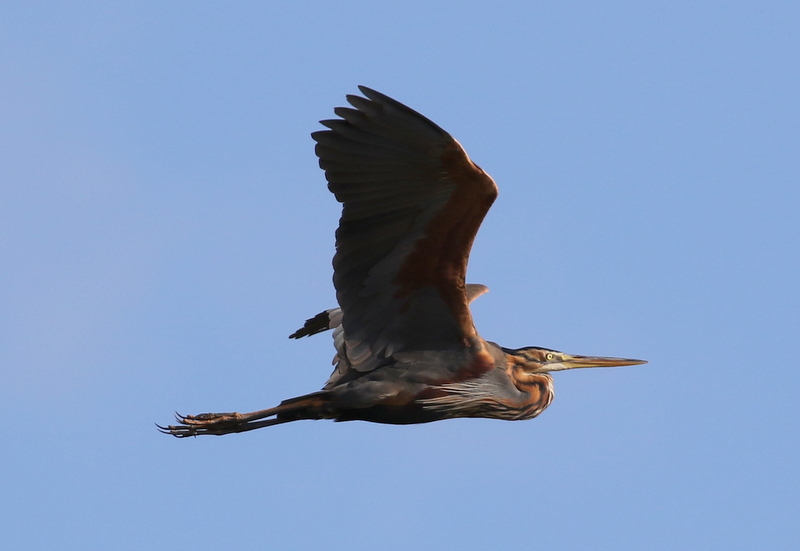 Purple Heron – a fresh arrival, at Paphos archaeological site
Purple Heron – a fresh arrival, at Paphos archaeological site
Harriers are also passing through Cyprus at this time of year. We saw several Pallid Harriers, including a number of stunning pale grey males. A smaller number of Marsh Harriers were obviously on the move, seen coming in off the sea or migrating through the hills, with one or two lingering around the wetland sites near Akrotiri. We also came across a single female Hen Harrier near Phassouri reedbeds.
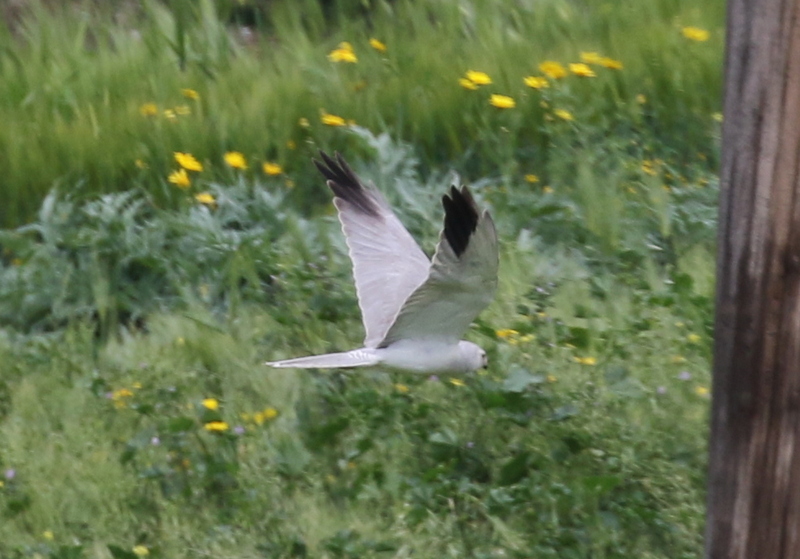 Pallid Harrier – a stunning grey male
Pallid Harrier – a stunning grey male
A Black Kite passing over the hills above Polis was a bit of a surprise. It is rather early for this species on Cyprus and this was possibly the first seen on the island this year.
 Black Kite – an early migrant above Polis
Black Kite – an early migrant above Polis
Resident raptors include Bonelli’s Eagle, which we ran into at three sites, two pairs and a single bird. The only Long-legged Buzzard we found was at Theletra, but we had great views of it as it circled overhead. A single Common Buzzard early in the morning near the Baths of Aphrodite was possibly waiting for the day to warm up before flying off north.
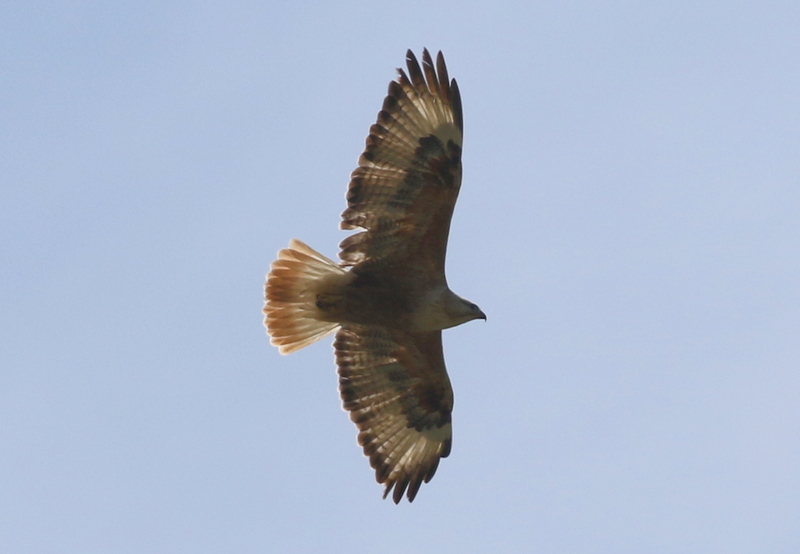 Long-legged Buzzard – circled overhead at Theletra
Long-legged Buzzard – circled overhead at Theletra
The commonest raptor on Cyprus is Common Kestrel. However, there are also Lesser Kestrels to be found at certain sites. These are summer visitors, but fortunately several were already in. We found seven at Anarita Park on our visit. As well as the smart males, it was good to get a chance to study the more subtle females too.
 Lesser Kestrel – a male at Anarita Park
Lesser Kestrel – a male at Anarita Park
Crakes are passing through Cyprus at the moment. There are no good wetland sites in the SW of the island these days (most of the pools have dried up), so to see them we had to venture further east. Unfortunately, we were unable to engineer our visits to be there for early morning or late afternoon, when the crakes are most active. But we did get lucky with a female Little Crake which came out to bathe in the middle of the afternoon after a rain shower. We watched it for over 15 minutes right below the hide at Zakaki, preening and then creeping around in the vegetation feeding. Stunning views!
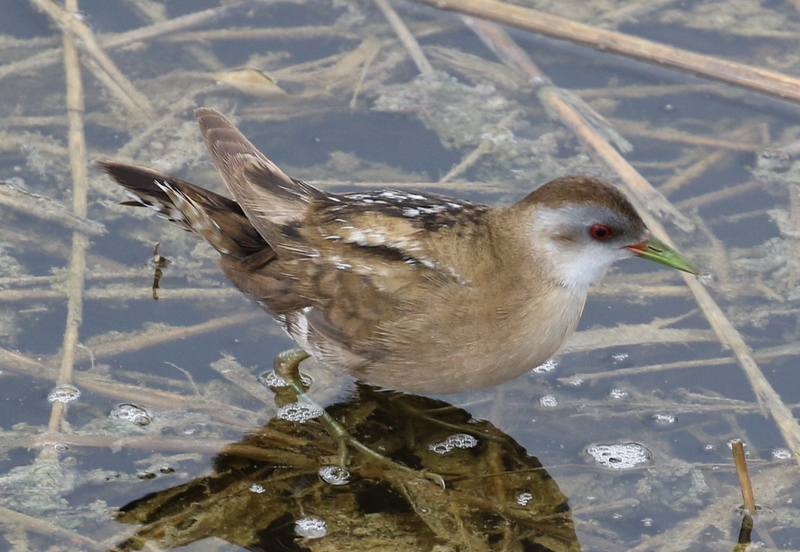 Little Crake – this female spent over 15 mins preening & feeding in front of the hide
Little Crake – this female spent over 15 mins preening & feeding in front of the hide
Waders were similarly thinly distributed in the west, the only exception being the striking Spur-winged Lapwing, which we found feeding in fields at a couple of sites and even on the rocks around the headland at Paphos. Stone Curlews were heard calling every night from our villa and we found at least four out in the open in an olive grove at Lower Esouzas one morning. We did also find three Green Sandpipers on the river around the ford at Nata. On two mornings we came across flocks of Black-winged Stilts flying west past Paphos early on.
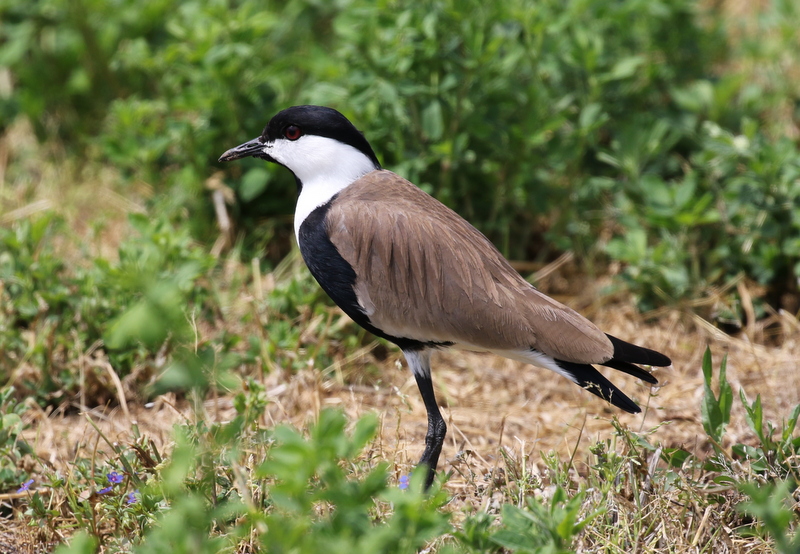 Spur-winged Lapwing – found at several sites, often away from wetlands
Spur-winged Lapwing – found at several sites, often away from wetlands
However, particularly near Larnaca we found a much better selection of waders. The most productive site we found was Meneou pools. The highlight here was a Red-necked Phalarope which we found, a scarce migrant through Cyprus and the first this year. However, at the same site we counted 22 Marsh Sandpipers, plus 5 Kentish Plover, good numbers of Little Stint, Dunlin, Black-tailed Godwit, Ruff, Black-winged Stilts and 7 Stone Curlew. There were also five Slender-billed Gulls here too, the only place we saw this species. Oroklini held several Wood Sandpipers and two more Little Stints, as well as lots of Black-winged Stilt and a few Spur-winged Lapwing. We added Common Sandpiper to the trip list with three at Larnaca Sewage Works.
The area around Akrotiri was a little disappointing in comparison. Phassouri Reedbeds produced several Wood Sandpiper, lots of Ruff and a few Common Snipe. A group of six Little Ringed Plover which dropped down by a puddle next to the road at Zakaki were probably migrants and moved on quickly. We managed to find 2 Marsh Sandpipers and a Little Stint at Lady’s Mile eventually, but otherwise it was mainly Ruff and Black-winged Stilt here.
The Greater Flamingoes around Akrotiri were a nice addition to the trip list. There were still lots out on the salt lake – with 1,000+ counted in recent days – but we got closer views at Lady’s Mile and Meneou.
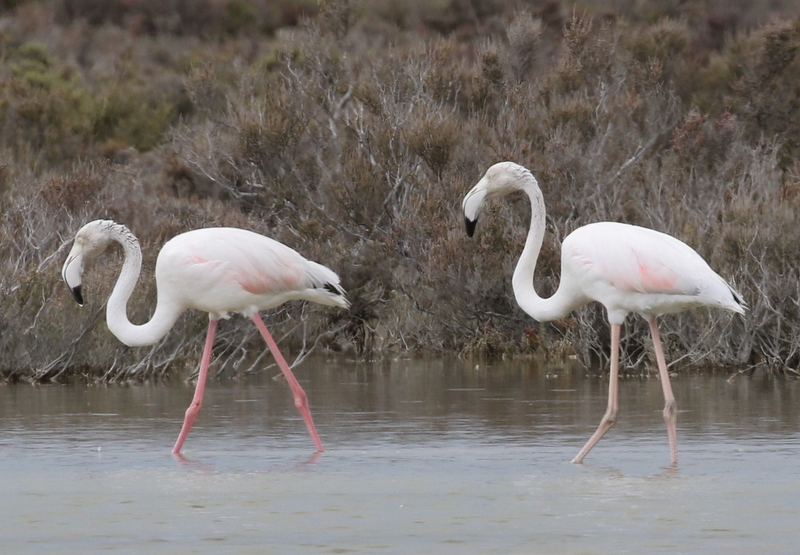 Greater Flamingo – still 1,000+ around Akrotiri during our stay
Greater Flamingo – still 1,000+ around Akrotiri during our stay
With relatively few hirundines in UK at this time of year, it was nice to see good numbers on migration through Cyprus. Swallows and House Martins were both common and we also saw a small number of Sand Martins. Red-rumped Swallows were both migrating through – we saw several obvious migrants around the coast – and inland they were getting ready to breed. On our way up into the Troodos Mountains, we stopped by a roadside puddle to watch a little group of House Martins and a pair of Red-rumped Swallows coming down to collect mud for their nests.
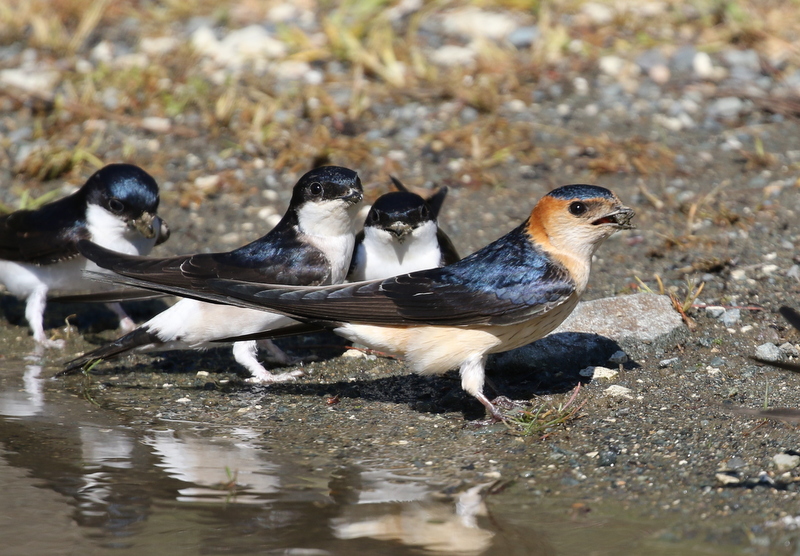 Red-rumped Swallow – coming down to collect mud for nest building
Red-rumped Swallow – coming down to collect mud for nest building
Lots of Common Swifts were seen, particularly around the coast, but there were comparatively few Pallid Swifts to be found. One over Oroklini with Common Swifts was presumably a migrant, but a pair of Pallid Swifts over Troodos were possibly breeding birds back on territory.
The shrikes we encountered were similarly made up of both migrants and breeding birds. Masked Shrike is the key species we wanted to see here, and we found both birds passing through on the coast and singing birds, holding territory inland. We also saw a smaller number of Woodchat Shrikes on our travels.
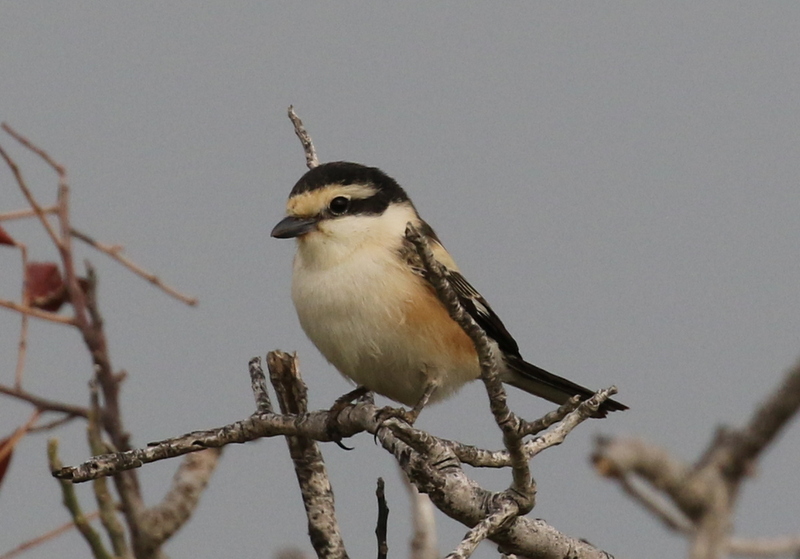 Masked Shrike – both migrants passing through and birds holding territory inland
Masked Shrike – both migrants passing through and birds holding territory inland
While those were some of the notable birds we came across, we also saw many more species and there were several non-avian highlights too. As well as many lizards, we came across one snake when my son, Luke, nearly trod on a Blunt-nosed Viper which was playing dead on a patch of waste ground. This is the most venomous snake on Cyprus, so it was lucky he spotted it in time! Thankfully, bites are rare and it appeared to be just a small one.
 Blunt-nosed Viper – Cyprus’ most venomous snake
Blunt-nosed Viper – Cyprus’ most venomous snake
We encountered a nice selection of butterflies – including amongst others Swallowtail, Eastern Festoon, Clouded Yellow, Cyprus Meadow Brown and Mallow Skipper. As well as a few Common Blue, we also found several of the endemic Paphos Blue.
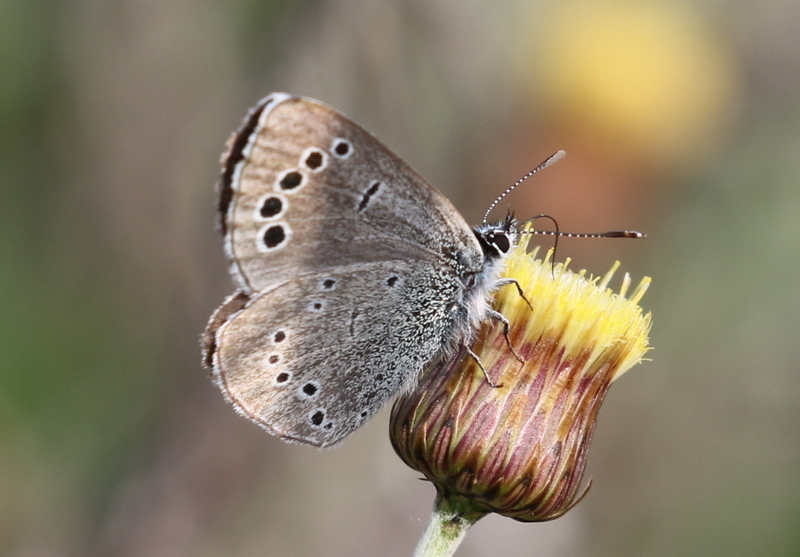 Paphos Blue – showing the distinctive underwing pattern
Paphos Blue – showing the distinctive underwing pattern
The spring flowers are amazing at this time of year, and we came across three different orchids on our travels. Several Bug Orchids were in flower down at Akrotiri, but on our way up into the Troodos we found a small group of Naked Man Orchid and Giant Orchids by the side of the road. Very smart flowers!
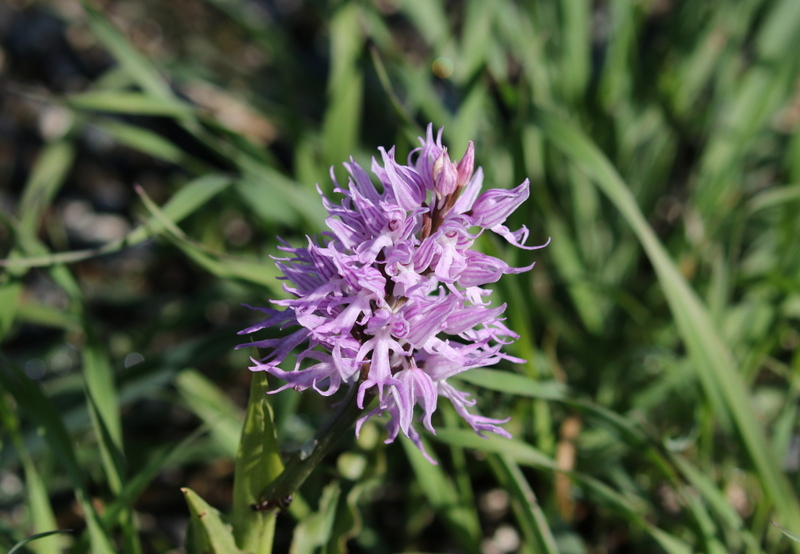 Naked Man Orchid – by the roadside on the way up to Troodos
Naked Man Orchid – by the roadside on the way up to Troodos
It was certainly a very exciting week we spent in Cyprus – from the large flocks of commoner migrants, to the rarer visitors and the local specialities. It is a lovely place to go birding at this time of year and we will certainly go back in the future. Hopefully it will not be another 30 years! We can definitely recommend it.
















